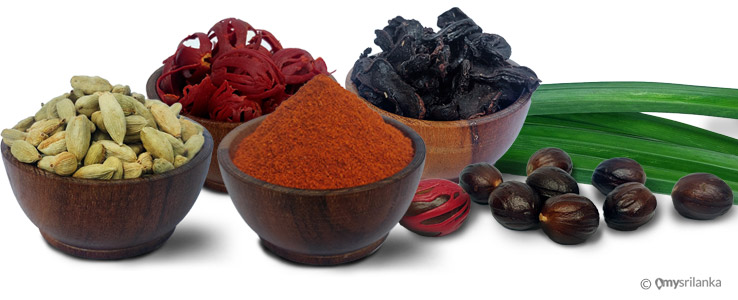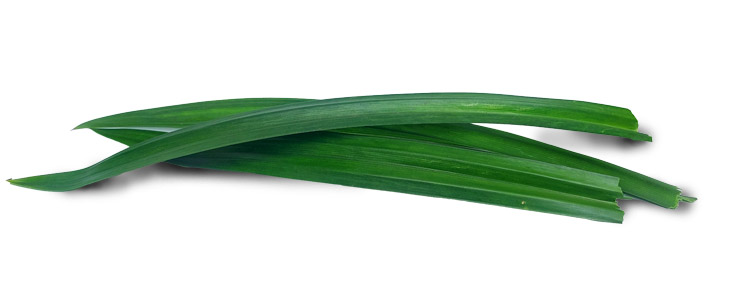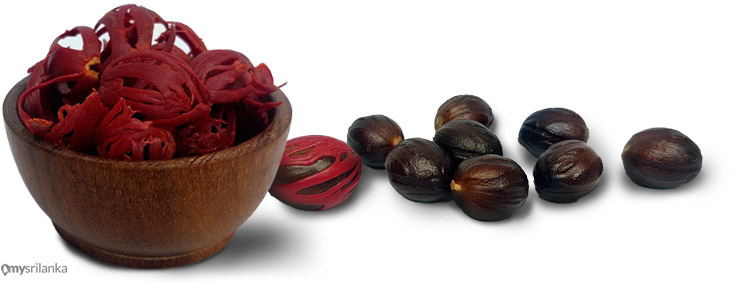
Sri Lanka, also known as the 'Spice Island', has a long-standing history of cultivating and exporting a wide range of herbs and spices. The unique climatic conditions of the island have allowed for the growth of various spices, which have played a significant role in shaping the local cuisine and tantalizing the taste buds of its communities. Over the years, Sri Lanka's spice industry has attracted the attention of numerous foreign nations, who have been captivated by the exquisite flavors and aromatic properties of the spices produced on the island.
This has led to the establishment of a thriving spice economy, with Sri Lanka becoming a prominent player in the global spice market. Among the most sought-after spices and allied products exported by Sri Lanka are cinnamon, pepper, cloves, cardamoms, nutmeg, mace, and vanilla. These aromatic treasures have gained immense popularity worldwide, finding their way into kitchens across the globe. In fact, Sri Lanka's spice exports now account for over 50% of its agricultural exports, and this upward trend shows no signs of slowing down. The abundance and diversity of herbs and spices found in Sri Lanka make it a true paradise for culinary enthusiasts and those seeking natural remedies. Whether it's enhancing the flavor of a dish or harnessing their medicinal properties, these 12 major herbs and spices from Sri Lanka continue to captivate and inspire people around the world.
Cinnamon is the spice that Sri Lanka is renowned for, specifically 'Ceylon Cinnamon'. This type of cinnamon is famous worldwide for its distinct flavor, color, and aroma, which sets it apart from Cassia. For many years, it has played a significant role in Sri Lankan culture, initially as a food preservative and later for its natural flavoring properties.
These thin, brown strips of bark emit a delightful fragrance and are commonly used in bakery products, flavored teas, and meat preservation. Not only does it enhance the taste of dishes, but it also offers various health benefits. Ceylon Cinnamon is known to possess medicinal properties that can aid in the treatment of chronic diseases like diabetes and cancer.
Additionally, it contains anti-inflammatory properties. As Sri Lanka's most important spice export, Ceylon Cinnamon is not only shipped in its natural form but also processed into tablets, powder, and essential oils for export to major markets. The value and significance placed on Ceylon Cinnamon establish Sri Lanka as the primary source for 90% of the true cinnamon exported worldwide.

Curry leaves or 'Karapincha' as referred to by locals come from a commonplace plant that can be found in almost any Sri Lankan home garden. These freshly plucked leaves give out a strong fragrance when tempered making them an ideal seasoning.
As the name suggests, Curry leaves are an excellent addition to curry-based dishes that dominate Sri Lankan and Eastern cuisines. Curry leaves are most effective when freshly plucked, which lead to them being grown in many home gardens bringing a variety of medicinal properties against liver diseases, cholesterol etc. while also lifting the dish's flavours to new heights.


The Pandan leaves, also known as 'Rampe', are part of a diverse group of screw-pine plants. These plant's leaves, resembling blades, have a strong and delightful nutty scent, making them a perfect complement to rice or curry-based meals.
Regardless of how they are used, Pandan plants offer a straightforward yet powerful way to infuse dishes with aroma and flavor, guaranteeing that your entire kitchen will be filled with its captivating and exotic fragrance.

Lemongrass, a tropical herb known for its culinary uses, features long thick stalks that produce an essential oil with a lemon-like scent, hence its name. In Sri Lankan cuisine, lemongrass is commonly used to enhance the flavor of meat and savory dishes by incorporating its lower bulbous portions, either pounded or sliced.
Apart from its culinary applications, lemongrass serves as a diuretic, tonic, and stimulant, showcasing diverse medicinal properties. Furthermore, it is valued for its insect-repellent qualities, highlighting its versatility as one of the most sought-after herbs cultivated in Sri Lanka.
Cloves are not only a crucial spice in Eastern cuisine, but they are also utilized for medicinal purposes such as treating dental issues, alleviating toothaches, aiding digestion, and even in the production of cosmetics like perfume, soap, and toothpaste. Sri Lanka stands out in the cloves market due to the superior quality oils present in Sri Lankan cloves compared to those from other regions.


Cardamom, known for its ability to tantalize your taste buds with its fiery flavor, is a beloved spice among locals. Encased within a small seed pod are black seeds that release its renowned sweet aroma. This versatile spice finds its way into numerous meat curries and yellow rice dishes, as well as being a delightful addition to desserts or a touch of spice in your evening tea.
Alongside saffron and vanilla, Cardamom holds a prestigious position as one of the most highly regarded spices globally, earning its rightful title as 'The Queen of Spice' due to its extensive culinary and medicinal applications.


Chilli, a straightforward yet powerful ingredient, offers a convenient way to add a kick of spice to any dish. With a variety of colors, sizes, and heat levels, these fiery peppers are versatile. In Sri Lanka, different types of chillies are grown and utilized in local cuisine, from the popular red ones that can be ground, sliced, or dried for storage and an extra texture, to the even spicier green chillies that provide an added burst of flavor.


Cumin is a spice that is made from the harvested seed of Cuminum Cyminum plants, Cumin is one of the most prominent spices around the world as these tiny boat-shaped seeds have historically seen use in Middle Eastern and Asian cuisines. The most common variety of cumin traded around the world is of the yellow-brown variety which is used for the preparation of dishes while other varieties such as the sweeter black cumin often seen used in the making of dessert.
As a flavouring medium cumin is often used in roasted or ground form, toasting the cumin seeds has been found to be the most successful method of releasing their warm earthy aroma and sweet-spicy flavour that lends itself as an excellent accompaniment for vegetable curries or meat-based dishes. Beyond just a taste, elevator cumin is also known to possess distinct medicinal properties to aid against digestive difficulties, blood cholesterol or diabetes.


Coriander, a delicate herb commonly found in vegetable gardens across Sri Lanka, has been an integral part of Sri Lankan cuisine for centuries. In traditional practices, both the seeds and leaves of coriander have been used for their stimulating and medicinal properties, offering relief from upset stomachs, nausea, bacterial infections, and more.
When used as a spice, coriander seeds are renowned for their spicy citrus flavor. To enhance its culinary potential, the seeds are first roasted and ground into a fine powder, which is then incorporated into broth-based dishes. Additionally, coriander seeds are an essential component of Sri Lanka Curry powder.
Coriander is truly a treasure for chefs, as every part of the plant, from the leaves to the stems, is edible and exudes a tangy citrus aroma. This makes it an excellent addition to curries and salads. It is also a common practice to find torn coriander leaves used as a garnish in high-end restaurants worldwide.

Nutmeg and Mace, siblings in the spice world, both originate from the same tree. Nutmeg, the oval-shaped fruit, and mace, the reddish webbing that wraps around the pit, are commonly used in desserts like cakes and pies. Additionally, they are utilized in savory dishes such as sausages or stews, and are crucial components in seasonal Christmas beverages like eggnog.

Ginger, a spice that requires no introduction, is currently one of the most widely used spices globally, as more and more regional cuisines incorporate ginger into their dishes. Extracted from the thick gnarly roots of the ginger plant, which originates from Asian regions, it has become a favorite ingredient for both chefs and doctors due to its versatility in both culinary and medicinal applications.
A key component in Sri Lankan and Asian cuisine, ginger imparts a tart flavor with some peppery heat and mild sweetness that becomes milder when cooked. It is used to tenderize and flavor meats, adding complexity to any dish it is used in. Ginger can also be ground into a fine powder for use in desserts or sliced and steeped in hot water to make ginger tea, a popular beverage rich in health benefits.
In addition to its use as a spice, ginger is renowned for its numerous health benefits. It is a known antioxidant and has been found to significantly alleviate digestion issues and nausea, reduce muscle pains and inflammation, while ginger extract aids in supporting cardiovascular health.


Garcinia gummi-gutta, a Garcinia species, is commonly known as garcinia cambogia (formerly known scientifically), brindleberry, Malabar tamarind, and kudam puli (pot tamarind). This particular fruit resembles a small pumpkin and exhibits a green to pale yellow hue. Naturally thriving in the tropical rainforests of Sri Lanka, this tree is classified as a medium-sized evergreen. It prefers shaded environments and grows at a relatively slow pace. The tree itself features horizontal or drooping branches.
Goraka has a long history of being used in Sri Lanka for both culinary and medicinal purposes. When the Goraka fruit is young, it is green in color, but it gradually turns yellow as it ripens. Once fully ripe, the fruits are harvested and cut in half to remove the seeds. The fruit halves are then sun-dried for a day. After drying, they are smoked until they turn black and then rubbed with a mixture of salt and oil. Finally, the dried and seasoned fruit halves are stored in earthenware pots, which are tightly sealed. This preservation method allows the Goraka fruit to stay fresh for years.
